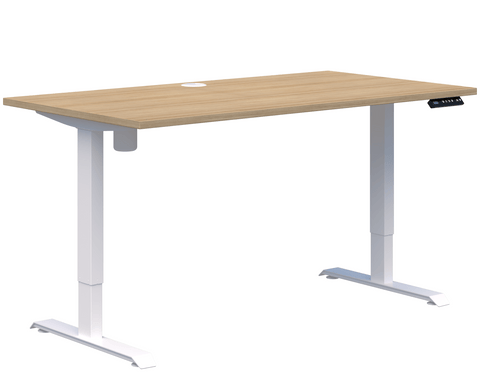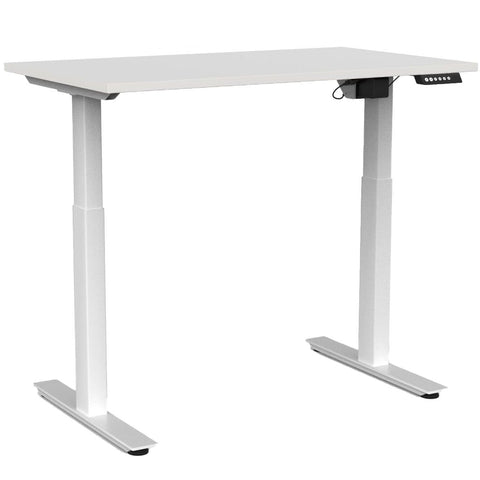Today’s modern workplace is not complete without office desks as they are the primary focus of productivity, creativity and professionalism. In regard to the choice of the office desk that offers the best results, the material makes a difference. Of all the choices one is likely to encounter, wood can be described as one of the most classic and universal materials.
However, which kinds of woods are most suitable for an office desk? What is the best thickness for the top of the desk? A good desk should have which features?
Let me address these questions and explain why wood is perfect for your office desk further below.
What Kinds of Wood Are Suitable for Office Desk?
In order to consider some of the right and best wood for office Desks, the following considerations come into place; durability, look at the appearance of the wood, and cost. From a plethora of boards that can be purchased these days, several options deserve to be called the best types of wood for the office desks.
Oak
Oak is extremely hard wearing although highly figured oak can be susceptible to cracking, however it would make for an excellent desk as it will be strong enough to take the rigours of daily use.
It has excellent appearances of grain and typically is supplied in both lighter shades and the dark shades depending on the office d cor.
Maple
Maple wood provides a smooth and unadorned finish which is ideal for professionals more so in the contemporary designed offices.
It’s highly durable and you’ll hardly find it coming out with scratches or dents and so your desk looks brand new even after a few years.
One of the best spacious desk in NZ, available in Oak and Maple:

Cherry
Cherry wood is classy and luxurious appearing in rich, reddish-brown color.
It grows a very unique finish over time to make your desk look even more appealing.
Walnut
This timber is prized for its intense, glossy, chocolate-brown color and intricate patterning that will give each desk a one-off appearance.
It is one of the best kinds of hardwood that are strong and resistant hence the best to invest on as per your office.
Mahogany
It is well known for its fine deep reddish-brown colour and its uniform medullary figure. It has a warm and glossy appearance, and hence it is used for high quality. It is a versatile species cut with ability to take a fine polish hence giving it that natural glossy look customers refer to when ordering their furniture.
Ash
First, ash wood is famous for its hardness and sturdiness; therefore, desks with frequent contact to abusive surfaces are made from it. This species has a light colored straight grain that can easily be polished to a natural or stained finish. Ash is also less dense than many other hardwoods which means it is easier to manipulate and move around during use.
Office Desk made of Ash with multiple options:

Birch
Birch wood is prized for its pale color and smooth texture, which give it a clean, contemporary look. It is often used in modern furniture designs due to its versatility and ability to take on various finishes. Birch is also known for its stability and resistance to warping, making it a reliable choice for desks that need to maintain their shape over time.
In the end, there is no one best wood for a desktop as the choice depends largely on individual preferences, budget considerations, and the desired aesthetic of the workspace. Each type of wood offers its own unique characteristics, from the rich, luxurious tones of mahogany to the sleek, modern appeal of maple.
What Thickness Should be Expected for a Solid Wood Desk Top?
The thickness of the top of the desk is of great importance in as much as the aesthetic as it is in the functionality of the desks. Thorough desktop is more stable and durable especially if you intend to put heavy apparatus or other chattels on it. Another important factor is part of the desk, which is on top: its thickness can also considerably influence its look. It is worth mentioning that thicker tops appear to be more luxurious and classy.
On general note, a solid wood desk top should not be less than 1 inch in thickness as it provides the best support to the desk. However, the denser ones on top, measuring between 1.5 to 2 inches are being used more to improve aesthetics and durability.
Of course, thick desk tops are definitely utilitarian because they are durable, permanent and offer a large working surface, yet there are valid reasons for getting a desk of much thinner top. Adopting a slim style may bring lots of benefits ranging from utility to aesthetics for the needs and wishes of users.
The thin profiles are suitable for small working spaces, mainly because they are light and can easily be moved from one point to another. They also have a stylish appearance and allow personalization, as well as possibly guaranteeing improved ergonomics. Last but not the least, no matter what kind of e-learning solution you find most convenient.
What Features Should I Look For In a Desk?
- Every person and offices may have a different requirement hence, while choosing the office desk you have to consider your needs.
- Here are some key features to look for:
- Working Surface: Make sure the desk provides enough space for a computer, paper works, files, and other items you frequently use during work.
- Storage Options: Look for options with drawers, shelves or cabinets that will provide additional storage and hopefully, cut down on the potential for clutter.
- Ergonomic Design: When selecting the desks make an effort to choose ones that possess heights which can be altered or perhaps that include efficient features that are meant to reduce the adverse impact of discomfort resulting from having to work for extended durations at the desks.
- Quality Construction: Look for good workmanship and strong joints at the corners, no sharp edges or corners and quality hardware finish for the likelihood of it lasting for a long time.
- Style and Aesthetics: The style of the desk should coordinate with other furniture in a certain office and, of course, it is important to choose something that reflects one’s personality and the kind of style one prefers; modern or traditional.
Wooden standing desks in NZ, perfect blend of ergonomic design and aesthetics:


Agile Electric 2-Column Individual Desk
View our full collection of electric desks.
Why Wood For My Office Desk?
Purchasing wooden desks helps to improve your office working environment in diverse ways which are as follows: Such an environment is warm, progressive and maintains a very dignified, enduring quality that makes its presence welcomed in any workplace. Their advantage is that the solid wood desks are sturdy and well made to withstand the wear and tear within home and retain their look for years. Wooden desks are completely different from synthetic models that somehow lose their performance indicators over the years, and begin to look sad. Wooden desks, on the other hand, look better year after year, acquiring a pleasant, one might even say noble patina.
Moreover, customization of wooden desks is flexible since it is possible to meet your unique needs easily. Whether you want a warm farmhouse look with a rough texture and a worn-out finish, or a stylish polished desk for a contemporary home with straight lines and a few subtle ornaments, wood lets you realise your design in the best way possible. Mortise and tenon joinery, a multitude of selectively sourced domestic and exotic woods, clear and opaque wood stains, a variety of metal knobs, pulls, and handles, all can produce a functional and aesthetically pleasing desk that will unify your home/studio and provide the ergonomic support that working artists require.
Therefore, when choosing a wooden desk it is possible to always obtain the most important qualities like sturdiness of the material, beauty, and efficiency without compromising one for the other. Everyone can find a desk that will increase workplace efficiency and make it look more welcoming by choosing between different types of wood, the thickness of the top, and additional features.





